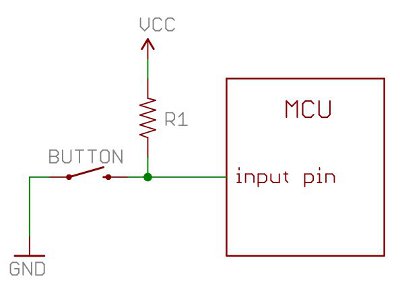legofan623
Well-Known Member
I have been looking at a lot of examples of circuits that require a pull-up or pull-down resistor for input pins to keep them high or low, rather than floating. Take a look at this diagram:

What I want to know is why, when the button is pressed, having GND and R1 connect doesn't fry the circuit, and rather it seems to override the resistor's (high) voltage to the input pin, and the input pin becomes (low) GND. It's like the resistor just vanishes from the circuit when the button gets pressed, and reappears when it's not pressed. Isn't there still a considerable amount of voltage coming out of the resistor?

What I want to know is why, when the button is pressed, having GND and R1 connect doesn't fry the circuit, and rather it seems to override the resistor's (high) voltage to the input pin, and the input pin becomes (low) GND. It's like the resistor just vanishes from the circuit when the button gets pressed, and reappears when it's not pressed. Isn't there still a considerable amount of voltage coming out of the resistor?
